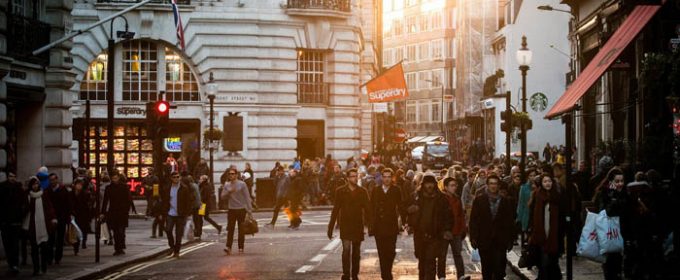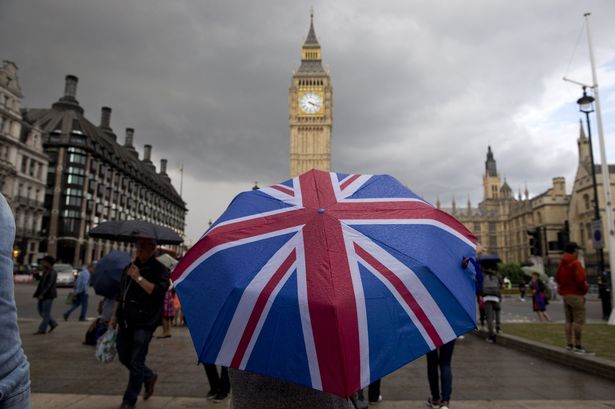How the UK managed to keep their unemployment rate low
By Ushna on Jan 03, 2022Global powers like the USA, China, Russia, and others greatly suffered an economic recession. They had to bear a massive depletion in the employment rate. Credit to the recent global pandemic, the UK has had a fair share of economic recession but their unemployment rate is strikingly low compared to other countries.
First off, the UK’s unemployment rate had been decreasing since 2013 up until April of 2019, a few months after the attack of COVID-19. And that applies to short-term jobs only, those workers who were employees for less than six months.
Employees who were employed for more than six months did not face any layoffs until December of 2019. From August to October of 2020, the UK bore the highest unemployment rate in years but most of the laid-off employees were short-term workers.
Since short-term employees were the ones who were mainly affected, it was easy for them to get another job. Just a month later, the unemployment rate began to fall once again and almost reached the same as it was before covid by the second quarter of 2021.
Another main reason how the UK managed to maintain such a low unemployment rate is the introduction of the furlough scheme. The furlough scheme enables employers to get government grants to cover most of the wages of their employees, who could not work due to the COVID-19 restrictions.
But despite lower numbers in the statistics, things were not going that well on the economic side. In August of 2020, the director of Reform Think Tank, Charlotte Pickles, stated some of the insight information claiming that the headlines about UK low unemployment hides the true effects of the unemployment crisis.
He said that the unemployment rate is low but almost a quarter of a million people are no longer a part of the national payroll. Furthermore, he also said that the number of people depending on the unemployment fund has doubled and millions of employees are hanging off the fund provided by the furlough scheme. In a nutshell, his point was that though the unemployment rate was low, economic inactivity was on the rise.
Compared to the US, the UK had kept a low unemployment rate amidst pandemic because the U.S. opted out to increase the unemployment benefit instead of adapting the furlough scheme. As a result, the unemployment rate quickly rose and even reached 14.8% in April of 2020.
Most of the European countries sponsored wages and therefore saw a lot less increment in the official jobless rate as employers did not have to lay off their employees because the UK government was paying them instead.
Moving onto the recent stats, in November of 2021, the UK saw a rise in the number of people on payrolls even though the furlough scheme had ended. This happened because tons of people came into work or joined new work after the COVID-19 restrictions were ended. The ONS (Office of National Statistics) stated that 160,000 new employees were added to payrolls by different employers and companies, in October 2021.
Following the release of COVID-related restrictions, the UK’s employment rate dropped 4.3% in just three months, from July to September.
The senior economist of the Resolution Foundation, Nye Cominetti, said that the unemployment rates are not to be concerned this winter but the wage rate is. He also said that the UK needs wage growth fast enough to protect the living standards of the people but not too fast that it causes inflation.
The furlough scheme, ever-decreasing unemployment rate, and the recent release of COVID-related restrictions were the three major factors that affected the unemployment rate. In addition to those, many other factors supported the feat.
The UK's labor market is flexible in comparison. ‘Flexible’ means that it is easier for the employer to cut the working hours and still keep the employees. A flexible labor market also means that employees can be replaced in an instant, firing, and hiring shouldn't be a hassle in such a flexible market but for some reason that doesn’t seem to happen.
Flexible pay is also a factor since employers can keep people employed at minimum wage rather than laying them off. Moreover, the decreasing productivity of the laborers is another factor of the low unemployment rate. Since the productivity of laborers is less, companies and employers need to hire more laborers to meet the production deadline.
Yet another reason for the low unemployment rate is the fact that the UK government has made claiming unemployment benefits stricter. One who wants the unemployment benefit must prove that they are actively looking out for a job and must be willing to accept a job if offered.
Considering that the unemployment benefit is less than the minimum wage, one would rather opt for a job than go through the tiring process of fake claiming unemployment benefits.


